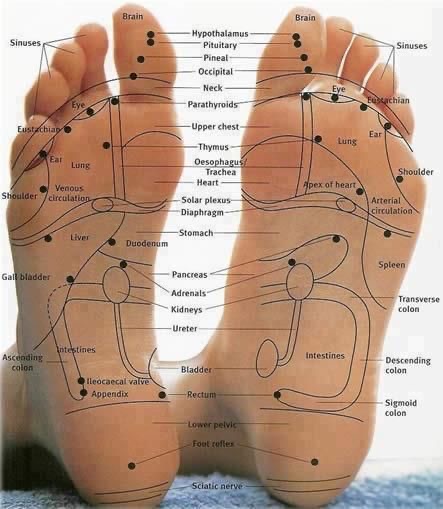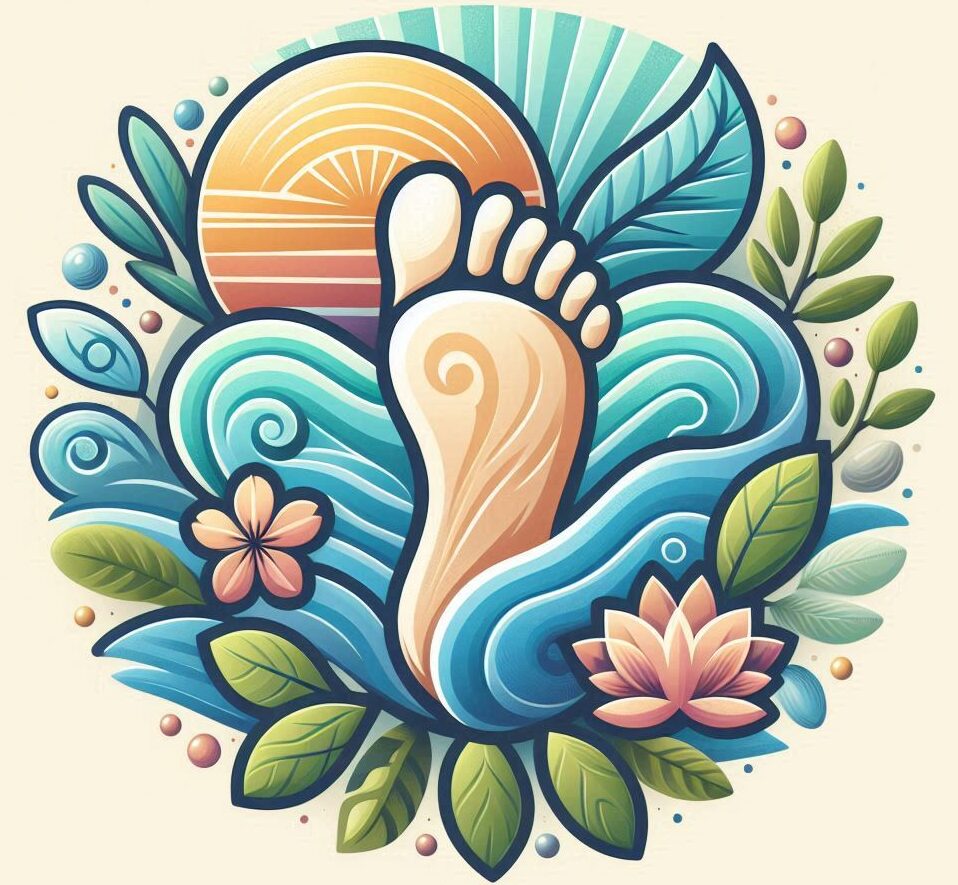
What is reflexology? It is a science that deals with the principle that there are reflexes in the feet that correspond to different body organs and systems. By applying pressure on these specific points, reflexology aims to promote balance and homeostasis in the body. It involves using specific thumb and finger techniques to achieve this.
Whether you’re dealing with stress or looking for an alternative way to manage pain, reflexology offers a unique approach.
As quoted from the `foreword’ in the book ‘Better Health With Foot Reflexology’ by Dwight C. Byers: “there are 7,200 nerve endings in each foot. Perhaps this fact, more than any other, explains why we feel so much better when our feet are treated. Nerve endings in the feet have extensive interconnections through the spinal cord and brain with all areas of the body. Surely the feet are a gold mine of opportunity to release tension and enhance health.”
Distinguishing Reflexology from Massage
Ever wondered how reflexology stands apart from massage? At first glance, both might seem to be similar, but the outcome and intention of each are rather different.
Traditional massage focuses on muscle relaxation and tension reduction.
Reflexology, on the other hand, taps into specific reflex points to influence various body parts. Think of it like a map of your internal body on your feet, and a trained reflexologist knows the routes. This approach aims for holistic wellness through activating those reflex points.
While a massage targets surface-level comfort, reflexology strives for internal health and balance. It is therefore more strategic and intentional than foot massage.
Choosing reflexology over massage could be about wanting deeper, body-wide relief. People looking for a comprehensive therapy experience might find reflexology to be a more fitting option.
Both massage and reflexology serve unique purposes. Whether you want immediate muscle relief or a more comprehensive interaction with your body’s natural healing ability, both offer suitable benefits. It all boils down to what your goals are in your wellness journey.
Frequency of Sessions: How Often Should You Go for Reflexology?
The right frequency hinges on personal health goals and individual response to treatments. Regular sessions can enhance benefits, but what’s ‘regular’ can differ vastly from person to person.
If you’re looking to reflexology to provide some relief from a specific health condition, like chronic pain or anxiety, weekly sessions might be a good starting point. Frequent visits allow your body to familiarize itself with the therapy, potentially amplifying its effects. Over time, you might adjust and reduce visits as symptoms improve or stabilize.
For those seeking general relaxation or stress relief, a bi-weekly or even a monthly schedule may be more suitable. This moderate approach may be all that is needed to maintain a sense of balance and well-being.
Taking cues from your body’s feedback after a reflexology session is crucial. Positive changes, such as improved sleep or reduced stress, can hint you’re on the right track with your frequency. Conversely, if improvement stalls or discomfort arises, tweak your schedule accordingly.
Individual experiences vary, and experimenting to find your personal rhythm can lead to the best results.
What to Expect During a Reflexology Session: A Step-by-Step Guide
There is a thoughtful process involved to tailor the experience to your needs. It starts with an initial consultation where a discussion is held to provide you with an opportunity to discuss any areas of concern that you may be experiencing, to ask questions, and to clearly determine what you are hoping to achieve from your reflexology therapy session. You will also be required to fill out a client intake form at the beginning of your initial consult.
You will then be made to feel comfortable in a sitting or lying position. All that will be required of you is to remove your socks and shoes. Relaxing music may be played as well to enhance your experience and to help you to relax. A blanket and a pillow will also be provided for you comfort.
Before the session begins, a refreshing wiping of the feet is done with a warm cloth. During the session your feet will be methodically worked upon one foot at a time, usually beginning with the left foot. The foot that is not being worked upon first is wrapped in a soft, warm cloth. The entire area of each foot will be worked upon, and pressure will be applied to specific reflex points along the way. You might feel varied sensations—from pleasant sensations to light sensitivity or mild to moderate soreness.
After the session it is common to feel relaxed or energized, paradoxical as it sounds. There may be immediate benefits, or there may be a slow-build as the body adjusts. Drinking water is often recommended post-session to help hydrate you before you leave.
Follow-up might include discussing any sensations that you may have experienced, and planning future sessions. If you’re new to reflexology, this structured yet personal approach can pave the way to exploring health benefits from heel to head.
